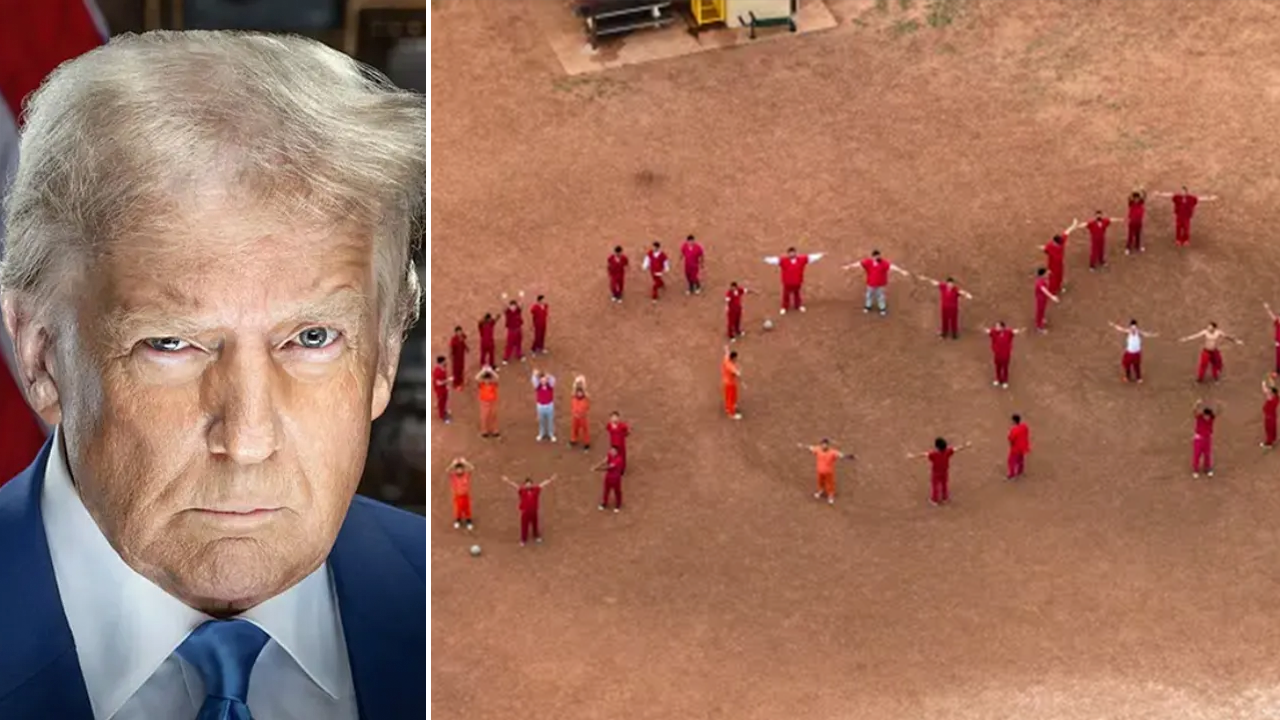When Donald Trump chose a Project 2025 author to lead a key federal agency that would carry out the underpinnings of the conservative manifesto’s aims, he solidified the project’s role in his second term.
Shortly after he won re-election, the US president nominated Russ Vought to lead the office of management and budget. Vought wrote a chapter for Project 2025 about consolidating power in the executive branch and advances a theory that allows the president to withhold funds from agencies, even if Congress has allocated them. Consolidating power, in part through firing a supposed “deep state” and hiring loyalists, is a major plank of the project – and of Trump’s first 100 days.
Trump tried, repeatedly, to distance himself from the project, led by the conservative thinktank the Heritage Foundation, on the campaign trail after the left used it as shorthand for the dismantling of government that would take place if he won. Since he’s taken office, the illusion that his ideas were drastically different from the project has fallen.
Related: Trump 100 days: tariffs, egg prices, Ice arrests and approval rating – in charts
“The whole distancing themselves from Project 2025 may have pulled some voters,” said Manisha Sinha, a history professor at the University of Connecticut, but “my sense is that they’re going to try and push all the items within Project 2025 as much as they can.”
Many of Trump’s moves in his first 100 days come directly from Project 2025, which involved more than 100 conservative organizations and represented a sort of consensus among the Trumpist right about what he should do in a second term. In some instances, he has gone beyond the project’s suggestions. And in other cases, because the project was written in 2023, subsequent policy ideas from the Heritage Foundation have shaped his actions and goals.
For instance, the project predated Elon Musk’s outsized role in the election and then in the Trump administration, but the goal to slash government programs using the so-called “department of government efficiency” fits the spirit of the project. It also predates the war in Gaza and the crackdown on speech in the US in the name of antisemitism, but Heritage’s Project Esther laid out a strategy to crack down on civil society groups that support Palestinian rights.
Trump’s campaign once said people associated with the project wouldn’t get jobs in his administration. Instead, several hold prominent roles, in some cases now carrying out the plans they wrote about in the project.
He chose Peter Navarro as a trade adviser; Navarro wrote a chapter for the project that advocates for increased tariffs and a restructuring of US trade, which Trump is now working on. His press secretary, Karoline Leavitt, appeared in training videos for Project 2025. Brendan Carr, Trump’s nominee to chair the Federal Communications Commission, wrote the chapter on the FCC.
The former director of the project, Paul Dans, stepped down from his role amid concerns that the project was derailing Trump’s re-election effort. Dans told Politico in March that Trump’s second term was “actually way beyond my wildest dreams”.
“What we had hoped would happen has happened. So I can’t imagine how anything could end really any better,” Dans said.
Will Dobbs-Allsopp, policy director of Governing for Impact, and James Goodwin, policy director at the Center for Progressive Reform, have publicly tracked the executive actions suggested for 20 different agencies in Project 2025 as Trump has carried some of them out. Of the 532 proposals in the project that fall under these actions, Trump has already proposed, attempted or completed 153 of them – about 29%.
The belief that Trump was not fully prepared, and the broader conservative ecosystem was not aligned completely with his agenda, underpinned his first term. For his second term, conservative donors put major money into efforts to get the right on the same page and to come up with plans and personnel who would stand ready to implement these plans immediately if Trump won.
Related: Readers give their verdict on Trump’s 100 days: ‘Extraordinary destruction’
While thinktanks often seek to influence policymakers, the project stands out for its focus on Trump.
“Really, it was written for Trump or Trumpism,” Goodwin said. “There really was an audience of one in mind … Trump had as much gravitational pull on Project 2025 as Project 2025 hopes to have on Trump. It’s just a very unusual thinktank-policymaker relationship.”
Where Trump has used the project
The threads of Project 2025 are visible across the federal government in Trump’s second term.
He is in the process of firing people disloyal to the Trump agenda, a first step in creating a government more beholden to him. An executive order signed in April called for tens of thousands more roles being listed as political appointments rather than career civil servants, a move Project 2025 promoted as a way to drive out the kinds of people who stood in the way of success in his first term.
Project 2025 called for dismantling the Department of Education, which would require congressional action. Trump signed an executive order calling on the education secretary to start the dismantling process by shutting down major parts of the department’s work.
The project wanted to scale back the US Agency for International Development. Trump axed it.
“Libs are realizing that Project 2025 was the watered down version of this White House action plan,” Tyler Bowyer, a leader with conservative youth group Turning Point, said on X in early February.
Related: Trump 100 days: delusions of monarchy coupled with fundamental ineptitude
The project said that programs related to climate change should be ended; Trump has ended a host of climate programs and has withdrawn from the Paris climate agreement.
The Department of Justice should be reconfigured, ending a host of policies and enforcement that came during the Biden years, the project says. Trump has weaponized the department to achieve his goals and to go after his enemies.
In nearly all agency recommendations, the project suggested scrapping any diversity efforts. Trump ended diversity, equity and inclusion programs government-wide. He has taken actions to prohibit transgender people in sports and in the military and limited access to gender-affirming care, which aligns with ideas in the project that seek to reinforce binary genders.
The project recommended a host of ways to deport undocumented immigrants, end visa programs for people to come to the US legally, and restrict border crossings – a key part of Trump’s first 100 days, though the project didn’t suggest using the Alien Enemies Act, as Trump has, or going after birthright citizenship.
Trump signed an executive order that would make states carry more of a burden for disaster relief, another idea suggested by Project 2025, which also said withholding disaster funds was one way to enforce immigration laws.
The FCC, now led by a Project 2025 author appointed by Trump, is investigating National Public Radio and the Public Broadcasting System and will potentially defund them, which Carr wrote about in the project.
What could happen next
The first wave of Project 2025-aligned actions has been conducted largely by executive orders. A second wave of recommendations requires the rulemaking process at agencies and others would require congressional action.
Related: Tracking Trump – everything that’s happened in the president’s first 100 days
“They’re only just now starting their kind of policy, deregulatory effort, rescinding regulations in earnest. They haven’t even really gotten there yet. They’ve been so focused on agency operations and personnel for the past few months,” Dobbs-Allsopp said. “We would expect that at six months or a year, they will be even further along.”
Sinha predicted that the full-scale dismantling of the administrative state, if successful, could bring the US “back to the era of tainted meat and lead in hot water”.
Project 2025 represented the extreme version of what the Republican party has been selling since the Nixon and Reagan years, she said. It mixes the anti-government rhetoric with demonizing immigrants, poor people and people of color. “The Republicans have trafficked on this for a very long time,” she said.
“The people who hate government basically are running government,” she said.
.png)
 German (DE)
German (DE)  English (US)
English (US)  Spanish (ES)
Spanish (ES)  French (FR)
French (FR)  Hindi (IN)
Hindi (IN)  Italian (IT)
Italian (IT)  Russian (RU)
Russian (RU) 








Comments